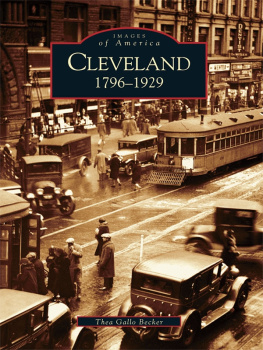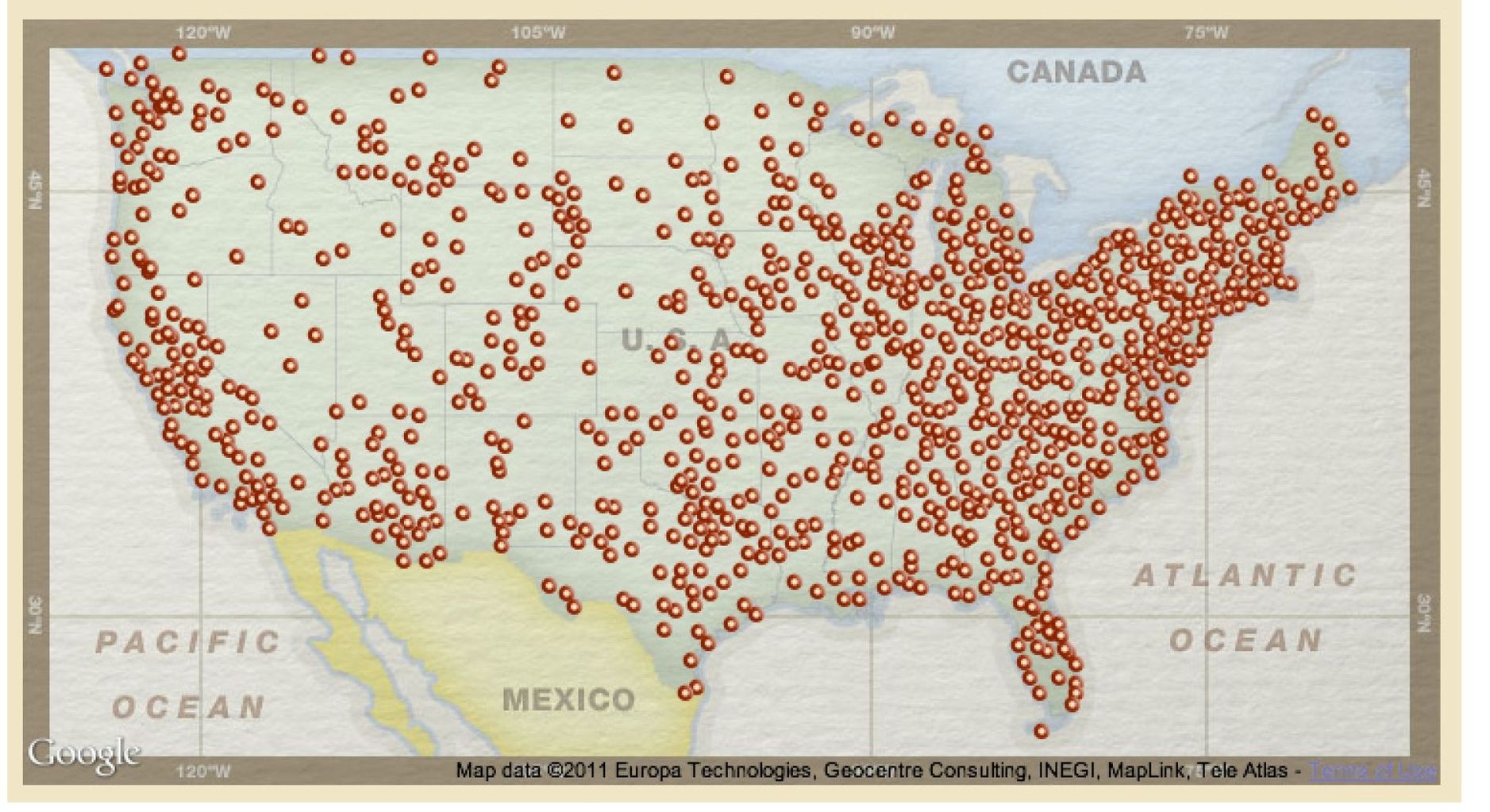One
CLEVELANDS EARLY YEARS
CENTENNIAL LOG CABIN. Major Lorenzo Carter was the first permanent settler of Cleveland. Major Carter came to the area in 1797, building a log cabin on the east bank of the Cuyahoga River. This cabin was built to resemble pioneer architecture and was placed on the northeast corner of Public Square. It was dedicated at a centennial celebration on July 21, 1896, sponsored by the Women of the Early Settlers Association. The sign next to the door reads, Centennial Log Cabin Tavern.
THE OHIO AND ERIE CANAL. The significance of the Ohio and Erie Canal in the development of Cleveland, Cuyahoga County, and all northeast Ohio cannot be underestimated. Alfred Kelley, one of the most influential of Clevelands early settlers, pushed for the northern terminal of the canal to be located at the mouth of the Cuyahoga River as it flowed into Lake Erie. This photograph was taken near the five-mile lock, c . 1890.
BUILDING THE CANAL . The path of the Ohio and Erie Canal followed the Ohio River from Cleveland down to Portsmouth, Ohio. Canal construction began in 1825 when Cleveland was a village of 500 and was completed in 1832. Clevelands economy grew strong as trade with merchants from Lake Erie sealed the citys reputation as the commercial heart of Cuyahoga County. This photograph was taken near the 12-mile lock, c . 1900.
OLD TRINITY CHURCH . The first church to be built in Cleveland was called Trinity Church and was originally located on the southeast corner of St. Clair Avenue and West 3rd Street. The Episcopalian parish of Trinity Church was incorporated in 1828, and in August of 1829, the church was open for worship. Trinity Church was a simple, white wooden-framed structure with a central tower.
CLEVELANDS NEW ENGLAND CHARACTER. Early drawings of Clevelands beginnings show a town planned according to the New England roots of its founder, General Moses Cleaveland, featuring a central meeting place or Public Square filled with many trees. In 1836, Cleveland was officially designated a city with a population surpassing 5,000. The view here looks east from West 6th (formerly Bank) Street and St. Clair Avenue. Trinity Church, Clevelands first house of worship, is in the center.
COMMODORE PERRY AT PUBLIC SQUARE. Commodore Oliver Hazard Perrys victory in the Battle of Lake Erie was commemorated with a sculpture of the hero by William Walcutt, dedicated in 1860, and placed in the center of Public Square on Superior Avenue. This was Clevelands first public monument. In the right background, the tall spire of the landmark Second Presbyterian Church is visible behind Public Squares many beautiful shade trees.
VIEW FROM WEDDELL. Peter M. Weddell was an early settler and businessman who built Clevelands first luxury hotel, the Weddell House, in 1847 on the corner of Superior Avenue and West 6th Street. This view taken c . 1876 provides a glimpse of the city as seen from the five-story Weddell. Standing tall behind the City Hotel is the Old Stone Church, an early Cleveland landmark that remains on Public Square.

FENCING IN PUBLIC SQUARE, 1857. As Cleveland grew in population and size, resentment stirred between those desiring preservation of the residential and park-like character of Public Square and those viewing the area as the ideal center for commercial activity. Superior Avenue and Ontario Avenue were the first city streets, and merchants thought they should run through Public Square. Opponents who wanted the roads to stop at Public Square erected fences to block traffic coming from Superior and Ontario Avenues. The fence is visible in the center at left as a public fountain pumps water in from Lake Erie. The fence remained an issue for 10 years until it was removed, and all of Public Square was opened. Looking east on Superior Avenue, a thriving commercial block is seen on the right, anchored on the southwest corner of Superior and Public Square by the Forest City House, established in 1851 and one of Clevelands earliest and grandest hotels. This location would remain prime space for hotels up through the present day.
THE LEMEN HOMESTEAD. William Lemen was an early settler and a businessman who traded in many basic commodities. He is remembered for the home depicted in this c . 1830 drawing that faced Public Square on the south side of Superior Avenue, then one of the major residential and upcoming commercial streets of Cleveland. It was the first house built on Superior south and one of the few homes built of stone. It was razed in 1854.




























